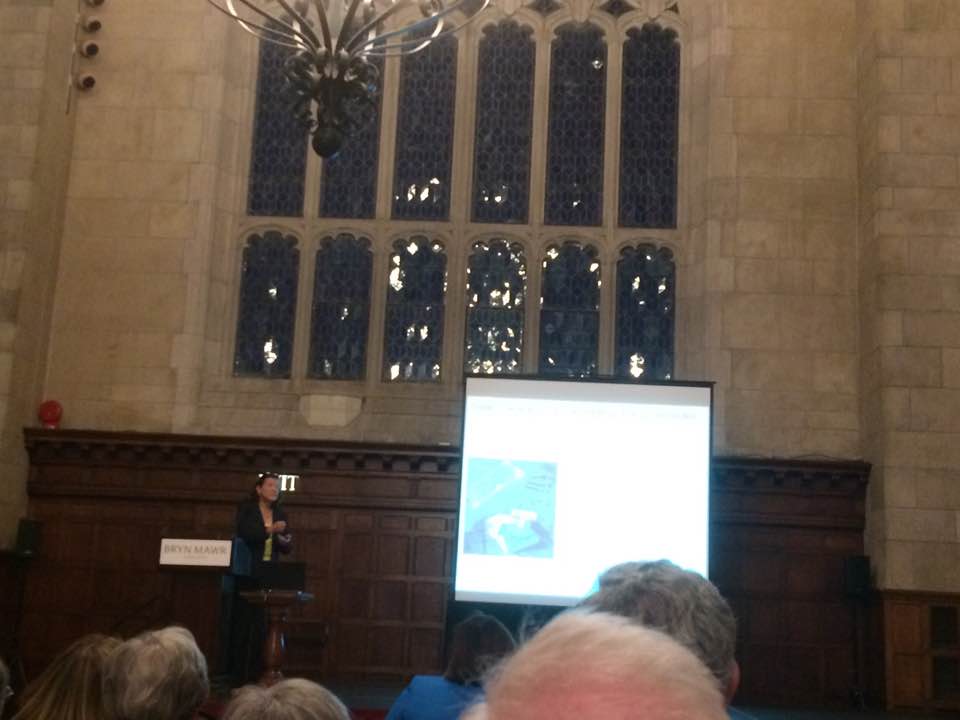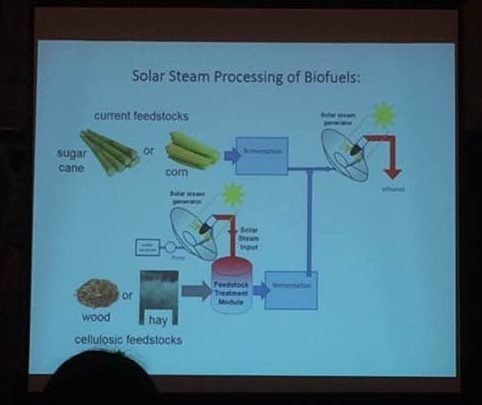On Thursday September 22, Dr. Naomi Halas MA’84, Ph.D’87 gave a public talk on her research in solar steam technology and its applications in energy, sterilization, clean water, and medical treatment. Halas is currently Rice University’s Stanley C. Moore Professor in Electrical and Computer Engineering, Professor of Chemistry, Professor of Physics and Astronomy, Professor of Bioengineering, Founding Director of the Laboratory for Nanophotonics, and Founding Director of the Smalley Curl Institute.
Halas first started to explain how her solar steam sterilization system works by introducing the audience to the basic physics and chemistry behind her design. One fundamental question was established: how do you make steam? Simple. Just boil water. This leads to the next fundamental question: how can you convert this method into energy most efficiently? There are many answers to that.
This process has many applications. One relevant application is to photothermal cancer therapy where incident laser radiation on a tumor is concentrated only on the tumor so as to not affect healthy tissue. Another application is using a compact solar autoclave enabled by nanoparticle solution steam generation to sterilize medical devices. A third application is using a solar steam sterilizer for treatment of human waste. A company founded out of MIT in Nairobi called Sanergy franchises out clean latrines to entrepreneurs who then send the waste back to the company to sterilize and convert to fertilizer. Another application is using this technology to enhance the energy efficiency of solar panels by coating the solar panels with the nanoparticle solutions. The final application of her solar steam generator Halas presented was its use in distillation. According to Halas, this is the biggest energy challenge you’ve never heard of. Distillation, or the process of separating products into chemicals, can expend up to 70-85% of fuel costs for chemical industries who distill bioethanol. Halas even jokingly pointed out that beer companies must distill their beer.

